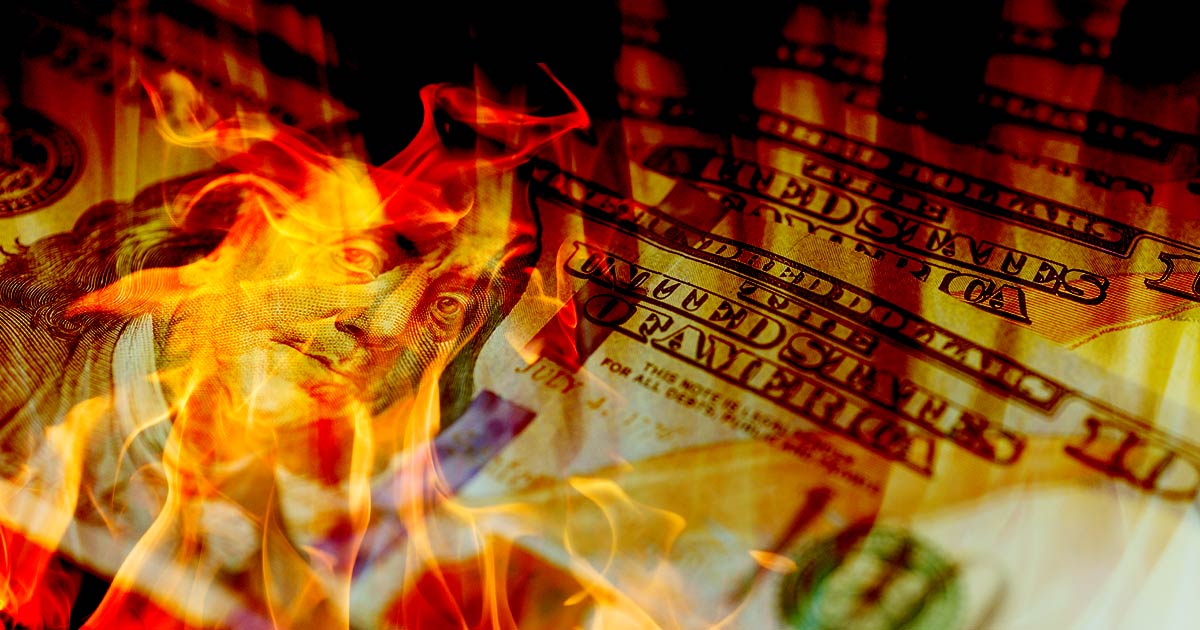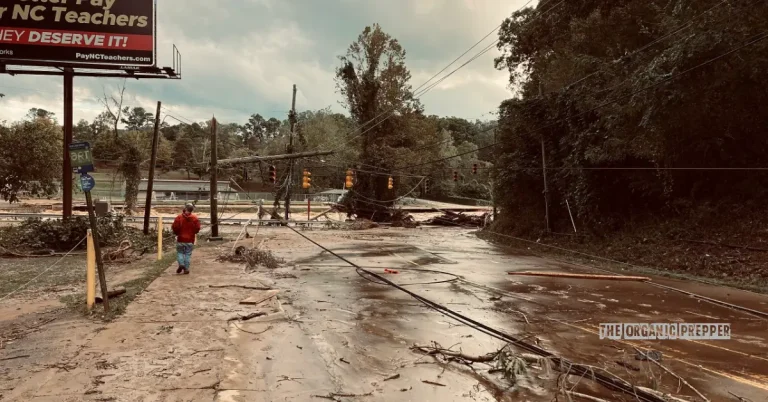Rising auto loan delinquencies, soaring national debt, and household liquidity predicted to vanish by May 2024. As household incomes witness the steepest drop since 2010 and crude oil prices skyrocket, the U.S is bracing for harsh economic times.
As the United States contends with an unprecedented rise in economic woes, preparing for what lies ahead is not only prudent but essential to your survival. Traditionally seen as the backbone of the American economy, the middle class is becoming increasingly synonymous with “the impoverished class,” signaling a critical moment in US history that demands immediate and substantial intervention.
Americans have lost over $7,100 in spending power since January 2021.
While the average American family’s weekly paycheck is about $230 larger today, it buys about $100 less compared to when President Biden took office. Even more alarming, is according to a report by the Heritage Foundation, inflation during Biden’s reign has caused the average American family to lose around $7,100 in buying power.
Under Biden, prices have risen so much faster than wages that the average family has lost $5,800 in real annual income. That loss is thanks to the ‘hidden’ tax of inflation, caused by the Biden administration and congressional Democrats’ policies. Higher interest rates are now costing the typical family another $1,300 annually. Combined with a lower real income, this effectively costs families a total of $7,100 in annual income under Biden.
A hard look at our fiscal reality presents a pretty shitty picture, with the US national debt witnessing an alarming surge — up a staggering $1.5 trillion since the recent debt ceiling crisis. In the last three months alone, the government has added an average of $500 billion per month to the national debt, translating to a 54% increase in the last half-decade. Yet, the government seems to be on a relentless spending spree, with the CBO anticipating a $2 trillion deficit in the coming year as year-to-date interest expenses cross the $800 billion mark.
Adding to economic problems is the surge in crude oil prices, officially breaching the $90 mark for the first time since November 2022 — a 35% increase in just three months. This upward trend has resulted in an alarming depletion of the Strategic Petroleum Reserves (SPR), leaving the US with less than 46 days of supply left in its reserves. The nation’s economic heartbeat seems to be fading with each passing day as excess household liquidity, currently standing at $1.4 trillion, is projected to completely dry up by May 2024, evaporating at a rate of $100 billion per month.
It’s hitting almost every economic sector!
Currently, the auto industry is smack dab in the middle of some real turmoil, with delinquency rates on auto loans reaching heights unseen since 2008, nearly doubling since the Federal Reserve initiated rate hikes in March 2022. The recent quarter saw a jump to 7.3%, a prelude to Moody’s prediction of a 10% delinquency rate by 2024. This has added to the crushing blow being felt by American households; the steady rise in used car interest rates and escalating prices has rendered basic necessities virtually unaffordable for many.
But it gets even more troubling when you look at incomes. American households endured the most significant drop in income last year, the largest dip seen in over a decade. In 2022, real median household income plummeted to $74,580, marking a 2.3% decline from the previous year, a rate surpassing the downturn experienced during the pandemic. This decline in income, alongside soaring credit card debt, which surpassed the $1 trillion benchmark for the first time, paints a troubling picture of the economic landscape and what lies ahead.
Massive increase in homelessness!
Another alarming indicator is the unprecedented 11% spike in homelessness, the highest since governmental tracking began in 2007. Cities like Oakland and San Francisco have become epicenters for this crisis, with nearly 600,000 people seeking refuge on the streets nationwide.
In the face of this impending economic turmoil, preparation and foresight are more crucial than ever.
As economic troubles continue to shake the foundations of American society, ordinary people are finding themselves navigating a landscape that grows increasingly bleak. Now more than ever, people need to prepare to survive the impending financial storms.
- People must understand how to manage debt effectively while establishing emergency funds to sustain them in tough times.
- It is essential to diversify income streams and consider investments in tangible assets.
- This is a moment for community-building, for neighbors to aid neighbors in pooling resources, sharing knowledge, and forging local alliances that can withstand systemic collapses.
In addition to financial preparedness, families should also focus on ensuring a steady supply of essential goods, such as non-perishable foods, medicines, and other mainstay necessities, to manage a household for an extended period without relying heavily on the government or external sources. Start looking into starting home gardens, learning preservation techniques for food, and enhancing self-sufficiency skills that can be a lifesaver during economic downturns.
Are you Prepared for an Economic Collapse?
In many ways the collapse is already here. For many families, they are already living the nightmare. This economic crisis is not to be taken lightly, it is one of the biggest threats we face.
We advise reading our article on Preparing for an Economic Collapse. We talk about the history of economic collapses, list the steps you need to take, and talk about what will most likely happen when the banking system goes down. You can read the article here.
Be Prepared to Feed Yourself when the Collapse Hits!
Grocery Options that ship right to your Home:

















